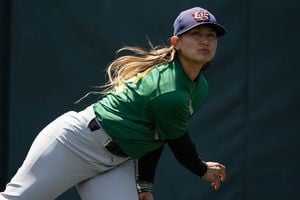Flatworms, known for their remarkable regenerative capabilities, are often associated with specialized adult pluripotent stem cells called neoblasts. These cells have been deemed central to the regeneration processes across various flatworm species. Recently, research focusing on the early-branching flatworm Stenostomum brevipharyngium has transformed this conventional view, demonstrating the potential for regeneration without these characteristic neoblasts.
Published on February 2, 2025, the study highlights how Stenostomum can regenerate its body following amputation. Despite lacking canonical neoblasts—typically seen as the only division-competent stem cells outside the reproductive system—this species can fully regenerate missing body parts, including its head and muscle structures. This finding raises questions about the evolutionary roots of regeneration and the role of different cell types.
The researchers employed advanced techniques such as single-nuclei RNA sequencing and functional experiments to investigate the stem cell systems present within S. brevipharyngium. Their analysis revealed dividing cells across multiple differentiated tissues, contradicting the notion of neoblasts being the sole regenerative cells.
Interestingly, key genes associated with germline multipotency and neoblast functions were not found to be necessary for the proliferation or regeneration observed. Instead, these genes appeared to be expressed mainly within the germline, indicating a significant distinction between S. brevipharyngium and other flatworms.
According to the study's findings, "Our results challenge the notion... and open up the possibility..." This implies the idea of convergent evolution of pluripotent stem cells across different species, something scientists previously thought was strictly due to the neoblast system.
One of the standout elements of the research was the identification of multiple distinct cell populations responsible for regeneration, signifying evolutionary divergence from the traditional flatworm models. The existence of these dividing cells residing not only within stem cell niches but also throughout differentiated tissues showcases how regenerative capabilities can vary dramatically among species.
The findings from this study are anticipated to shift the direction of future research on regeneration and stem cell biology, urging scientists to explore the diversity of regeneration mechanisms beyond the established plain vanilla frameworks. The broad phylogenetic sampling of neoblast-like cells highlights the necessity of continued research to unravel the complexity surrounding stem cell evolution.
With this study adding to the scientific dialogue on stem cell biology and regeneration, researchers are now urged to investigate the evolutionary consequences of these findings. Future studies might focus on how different regeneration mechanisms evolved across various lineages, and whether these findings might lead to novel approaches within regenerative medicine.
Overall, the research on Stenostomum brevipharyngium reinforces the notion of evolutionary adaptability and the significance of examining atypical models. This exploration is pivotal not only for theoretical knowledge but also for practical advancements within the field of regenerative medicine.



